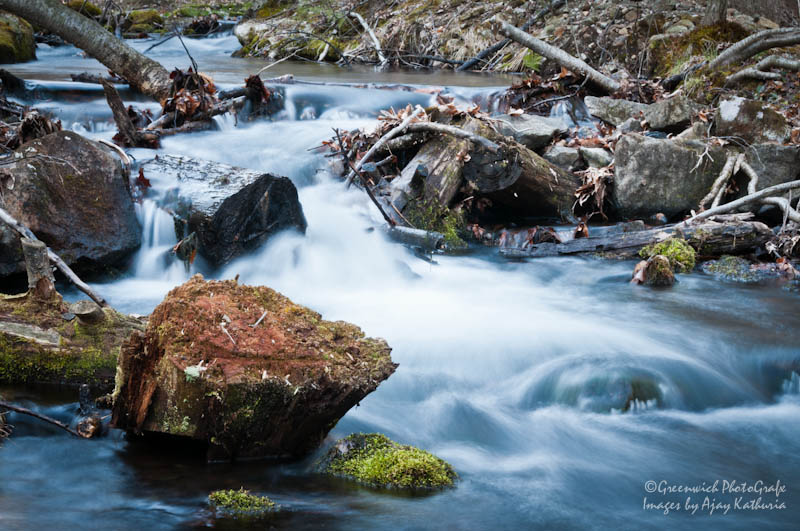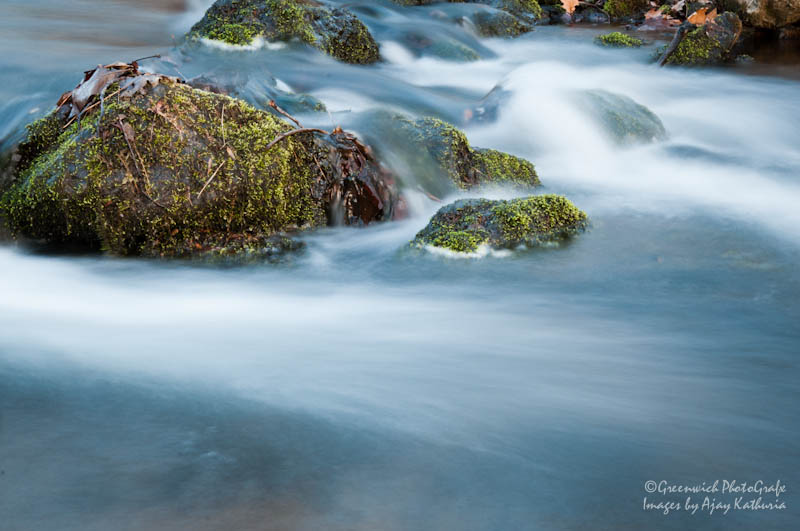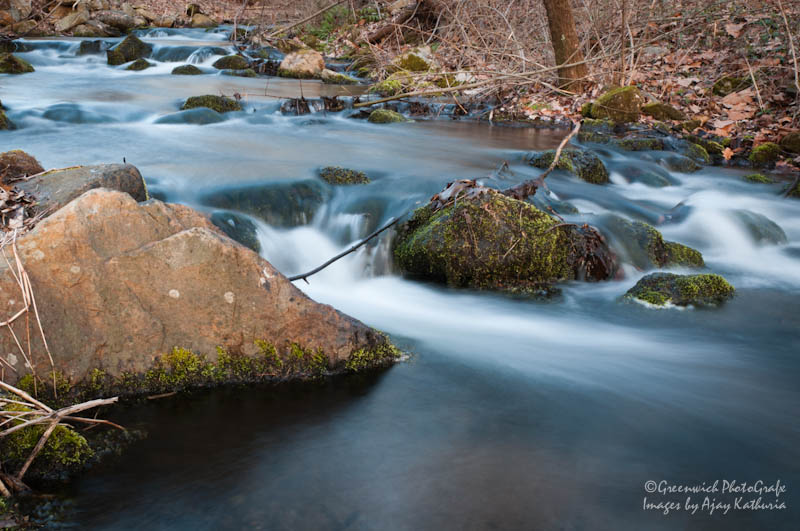If you’re drawn to water as most human beings are, and enjoy the view from behind a camera, one fascinating technique is to create a smooth silky water effect. It helps capture natural motion of the water, has almost an ethereal quality, and can create different pleasing effects depending upon the time of the year and lighting conditions.
Here are some simple examples of a smooth silky water effect on a water stream, followed by quick tips and techniques to create some memorable impressions of water.
The 3 important aspects of creating a silky water effect are:1) Camera Shutter speed (to create silky effect)
2) A Tripod (to keep non-moving objects sharp)
3) Lighting Conditions (to achieve correct exposure)
Depending upon the intensity of the moving water, you will need anywhere from 1s (1 second) to 4s shutter speed to get this effect. Even if you don’t have a DSLR camera, many mid-grade point-and-shoot cameras now allow manual controls, so that you can set your own shutter speed (and aperture). For comparison, most hand-held shots in natural daylight conditions are captured at a shutter speed of 1/125th of a second or faster.
With such slow shutter speed, you will need to set the camera on a tripod, or else you’ll get really fuzzy/blurry images. If you do not have a tripod, place the camera on a stable object that gives you the point of view that you like. You should also set the camera on a timer (5s to 10s), in order to minimize any shake from your hands after you press the shutter.
Lastly, but most importantly, you’ll need the lighting conditions on your side to get the correct exposure. The best time to try this is within the hour before and after sunrise or sunset, or on an overcast day with low level diffused lighting. To avoid over exposure at such low shutter speed, you’ll also need to set your lens aperture (opening) to as small as needed to get the right exposure. Generally, you’ll need to go to the smallest aperture possible, which results in the largest “F” number for your lens (F22, etc.). If the images still continue to be overexposed, you can try to increase shutter speed that still gives you a pleasing effect, or wait for lower lighting conditions.
It is almost impossible to get this effect on a nice sunny day. However, if you must, you’ll need to get a Neutral Density (ND) filter for your lens, which cuts down the amount of light entering the camera lens without impacting image white balance and colors. Depending upon the lighting, you might need the ND filter to reduce the light by several stops (or times), sometimes as much as 3-5 times. For this, you’ll need Variable ND filters that can reduce light up to 7 stops, although they can be quite expensive.
We look forward to trying the smooth silky water technique at other opportunities and creating some memorable water impressions. We welcome any comments or feedback.








by Ajay K.